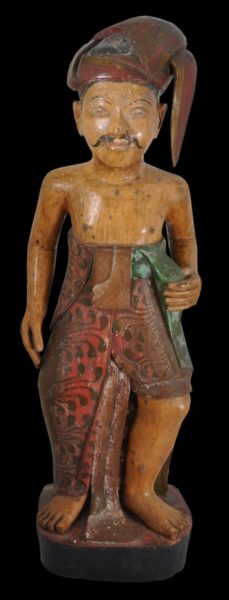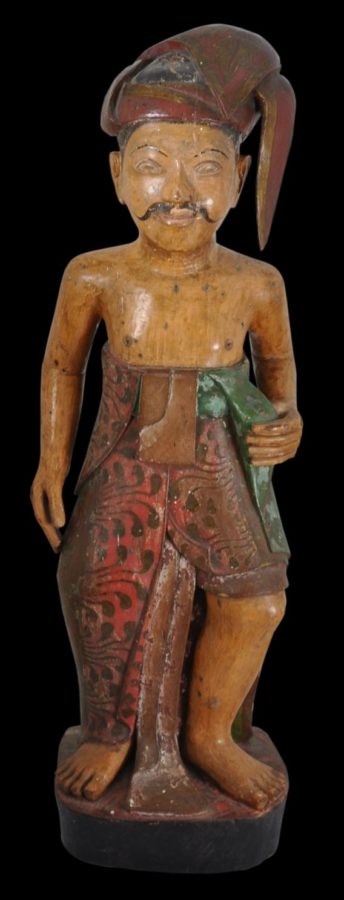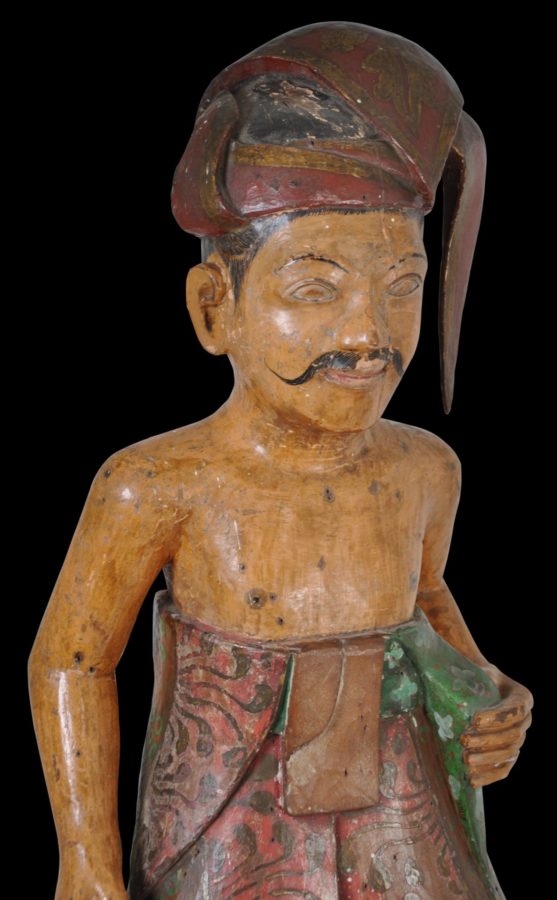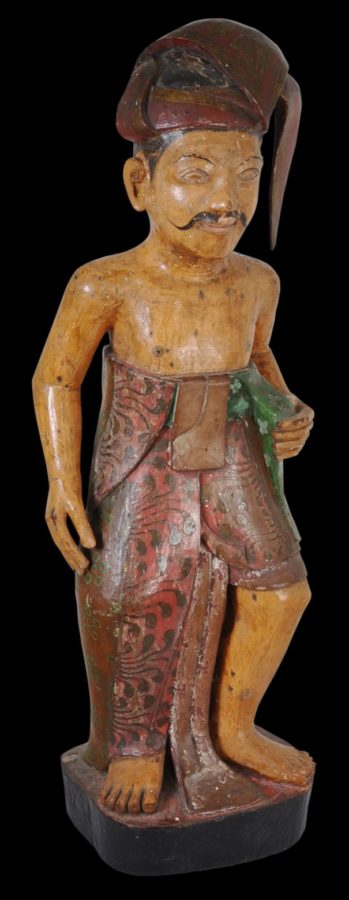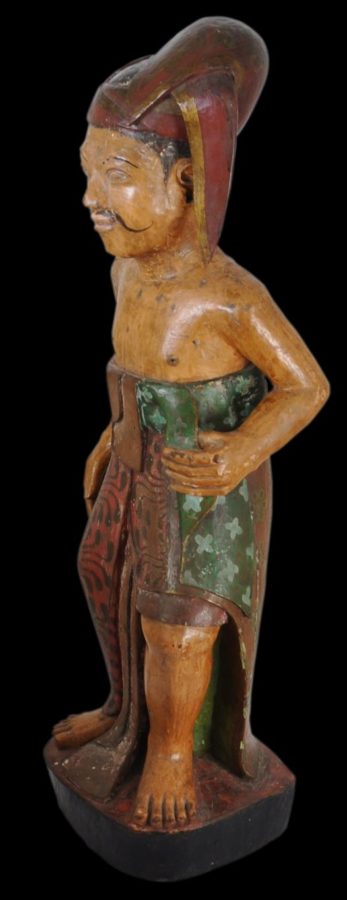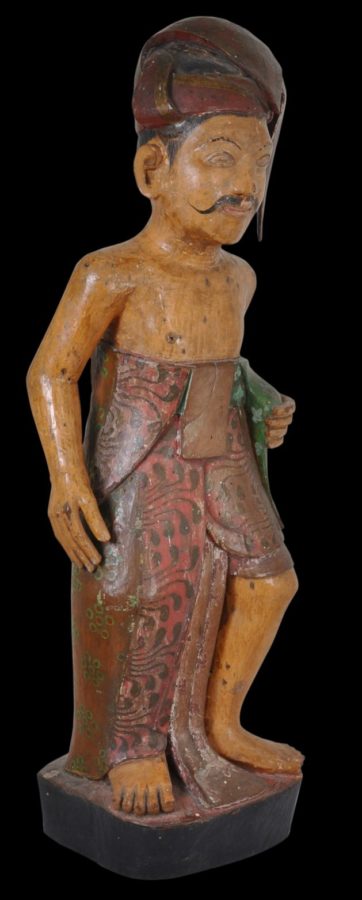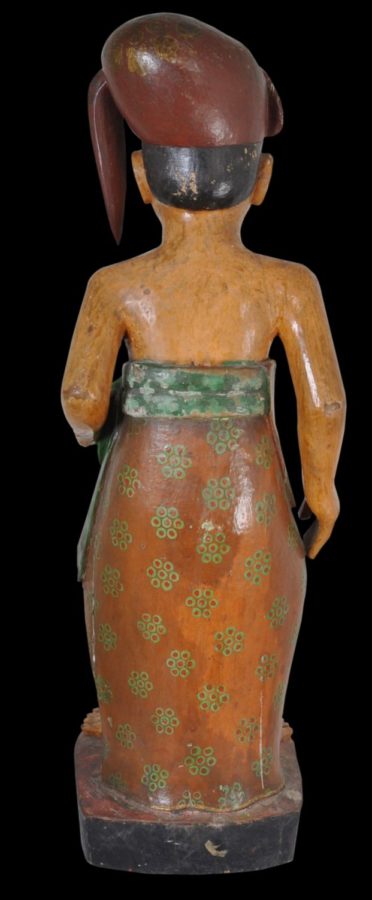This fine, tall figure of a Balinese man in traditional attire is very well carved from a single piece of wood, and has a superb patina with obvious age.
He stands with knees slightly bent – almost in a dancing pose (agem), with one hand down his side and the other holding his waist sash. The quality of the carving is particularly evident in the figures toes which are carefully are naturalistically delineated.
He has a well-defined face, with a curling moustache, high eyebrows, and tufts of hair visible beneath his folded headcloth.
He has an exposed chest, but with his sarong high up on his torso in traditional Balinese style. The sarong is coloured in red-brown hues and with tendril-like patterns over it. Traces of gilding on these indicate that originally these were painted over with gold leaf indicating that the sarong was designed to represent kain prada or textile that has been decorated with applied gold leaf.
The headcloth which has been elaborately tied also was decorated with gold leaf.
The sarong is held in place with a green sash, one end of which falls between the figure’s feet.
A thin cavity on the back of the image at the top of the sarong would have held a wooden kris in place but this is no longer present.
The depiction of kain prada, the somewhat regal pose, the pale skin of the figure, the fine facial features and almond-shaped eyes all suggest it was meant to portray someone from the ruling or Ksatria class.
The image is similar to an example illustrated in Reichle (2010, p. 164-65) from the Netherlands’ Tropenmuseum collection, which is identified as Prince Panji, here of the Malat cycle of stories.
The example here is in fine condition. The polychrome has flaked here and there but there are no losses to the carving (other than the kris which was separately made anyway) and no repairs. It is a beautiful example with obvious age.
Such figures were used in Bali to decorate temples and palaces. They were also popular among European visitors to Bali in the early 20th century.
References
Brinkgreve, F., & D.J. Stuart-Fox (eds), Living with Indonesian Art: The Frits Liefkes Collection, Rijksmuseum Volkenkunde, 2013.
Maxwell, R. et al, Bali: Island of the Gods, National Gallery of Australia, 2014.
Reichle, N. (ed.), Bali: Art, Ritual & Performance, Asian Art Museum, 2010.


